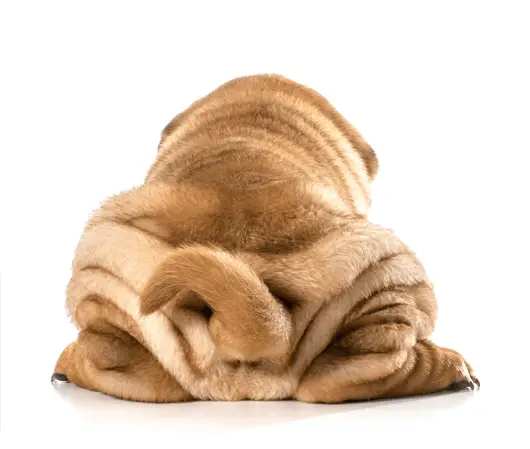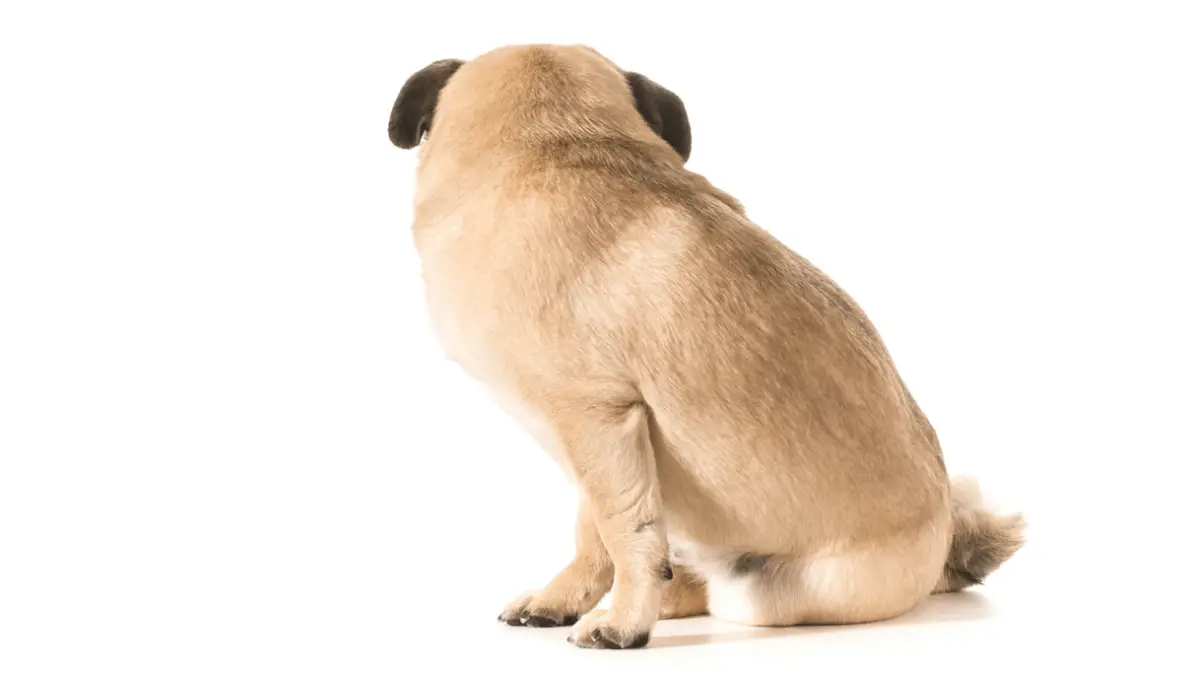Dog Dragging Butt - What Does it Mean?
19.03.2021.
A dog dragging butt across the floor can be a funny and embarrassing thing at the same time. It is right up there with your dog humping someone’s leg. However, a dog dragging butt, or dog scooting, can be a sign of health issues or other discomforts your dog might be feeling. If you are a dog owner, you are probably wondering why your dog is acting this way. Luckily, we are here to help you clarify this situation.
There are several possible issues when it comes to your dog dragging butt across the ground. It is pretty straightforward where the issue happened - around their butt. However, it doesn’t mean their anus is bothering them. Here are some of the most common reasons why you are witnessing your dog scooting.
1. After-grooming irritation
If you have a breed that needs plenty of grooming, like a Bichon Frise or a Cocker Spaniel, they may be experiencing a reaction to grooming products. Shampoos, clippers, oils, sprays, or perfumes can irritate the area under their tail. That is a challenging area for dogs to scratch, and the only thing they can do is drag their butt across the ground.
How to solve it?
The first thing you should do is to check the affected area for tiny razor burns or cuts. It is possible grooming equipment caused some slight harm to your dog, and they are getting rid of the discomfort by scooting. The best thing you can do about it is to notify the groomer about the dog’s reaction. Next time, bring your own hypoallergenic shampoo and conditioner or tell the groomer to switch products.

2. Anal sac issues
Dogs have anal sacs on either side of the anus. Anal sacs are sweat glands that help them mark the territory and leave a “scent card.” Healthy anal secs get expressed every time the dog poops. Sometimes, those glands can get blocked, and they will require a vet’s or groomers help. The fluid inside can harden, and if not manually expressed, these glands can get infected. If that happens, you will notice your dog scooting.
How to solve it?
If you notice your dog is dragging butt across the ground, you should call your vet and tell them you suspect anal sac issues. If that is true, the vet will express the dog’s anal glands. If the glands are inflamed, the vet can prescribe antibiotics and pain medication.
You can read more about anal glands here - Anal glands in dogs.
3. Anal sac trauma
If you notice your dog dragging butt often, and their anal sacs need to be expressed often, they can sustain anal sac trauma. The anal sac expression is usually done by groomers that might unnecessarily express them and injure the tissue inside those sacs. If that happens, the sacs will not work properly, which can cause further infections and problems. Besides, constant manual expression can lead to losing muscles necessary for anal sacs to work properly. This is often the answer to why owners see their dog scooting.
How to solve it?
Groomers expressing the dog’s anal sacs might not be the best option. However, they are often the first line of defense. Make sure your groomer knows how to gently express the anal sacs. They are a great team member to have on your side, and they will let you know if they notice anything weird or unusual on your dog’s body.
4. Inappropriate diet
For anal sacs to work correctly, your dog should have a balanced diet with enough dietary fiber. Dietary fiber will add bulk to the dog’s stool, and the anal sacs will empty on their own. Dogs that are on a diet that is not supplying them with all the necessary nutrients might have anal sac problems. The way dogs deal with it is by dragging butt across the floor. That is the only way they can alleviate discomfort in that area.
How to solve it?
The clear answer is dietary changes. Talk to your vet and ask for advice on what to feed your dog to solve their anal sac problems. If your dog has food intolerances, there are other options, such as using pumpkin supplements or Glandex. Pumpkin supplements are packed with fiber, and Glandex is a product that decreases the production of anal gland material and helps the anal sacs to express naturally.
If you want to know more about the healthy dog diet, check out this article - Best dry dog food.
5. Parasites
There are a few types of parasites in dogs; internal, intestinal, and external. External and internal will not cause your dog to drag butt, but intestinal might. Parasites like the tapeworm will cause your dog to scoot. If you notice your dog dragging butt across the floors, carpets, or on the ground outside, you should know that it can be a symptom of tapeworm infection. Other symptoms will include weight loss, diarrhea, and rice-like segments in the dog’s poop. Those are actually a part of the worm.
How to solve it?
Parasite infestations are usually resolved by medications. Many effective medications will take care of tapeworms irritating and bugging your dog. The key thing is to call your vet and tell them about all the symptoms you noticed your dog is experiencing. Even if you don’t see clear evidence of the worm in your dog’s poop, it doesn’t mean they are not there.
You can read more about types of worms that can infect your dog here - Parasites in dogs.
Final thoughts on dog scooting
If you noticed your dog scooting once or twice, it is not necessarily a sign you should start panicking. They can just have an itch or something bothering them down there they needed to get rid of. However, if the behavior persists, and your dog scooting and dragging butt happens a lot, you should call your vet and schedule a check-up.
World Dog Finder team







Share